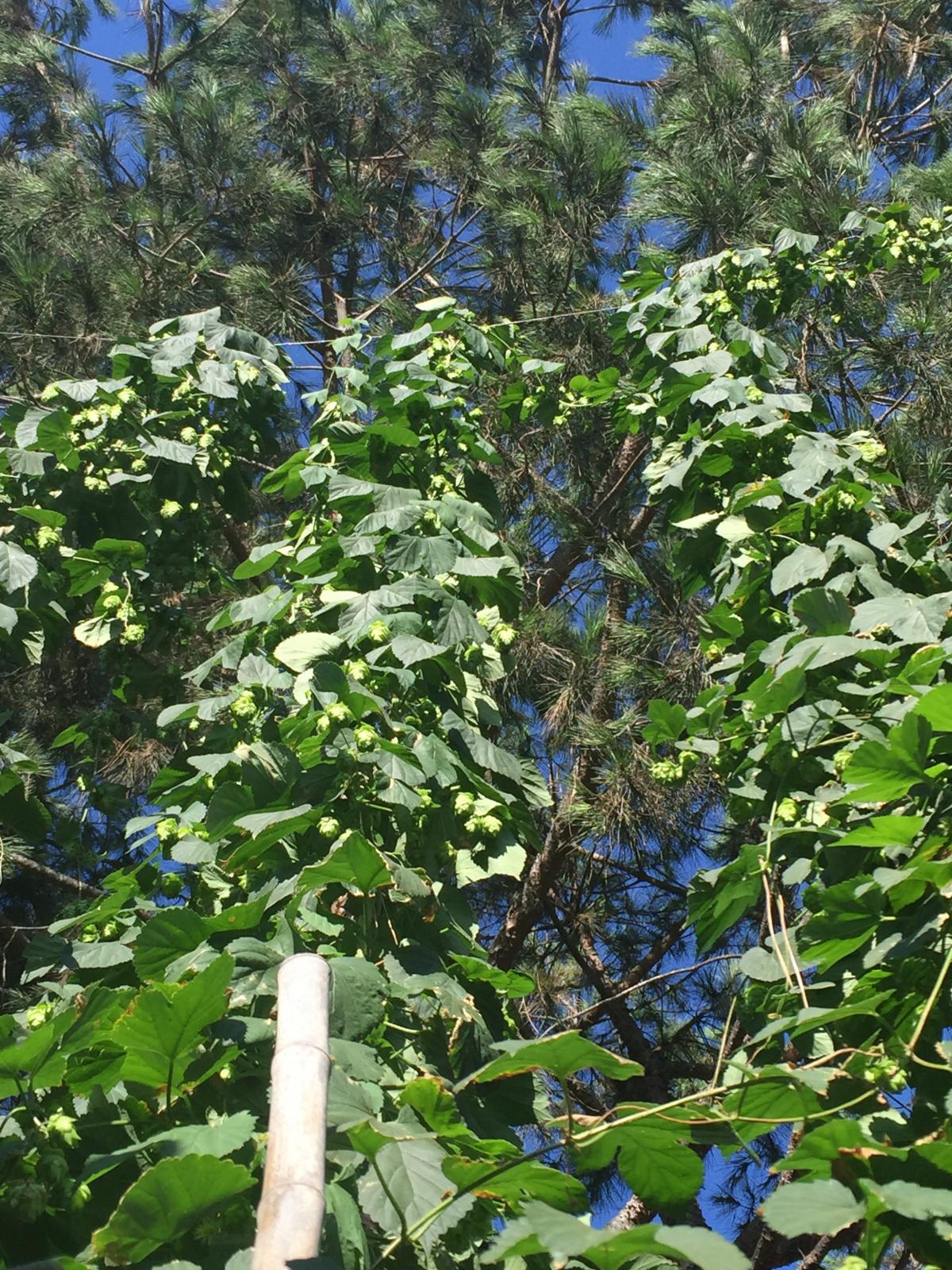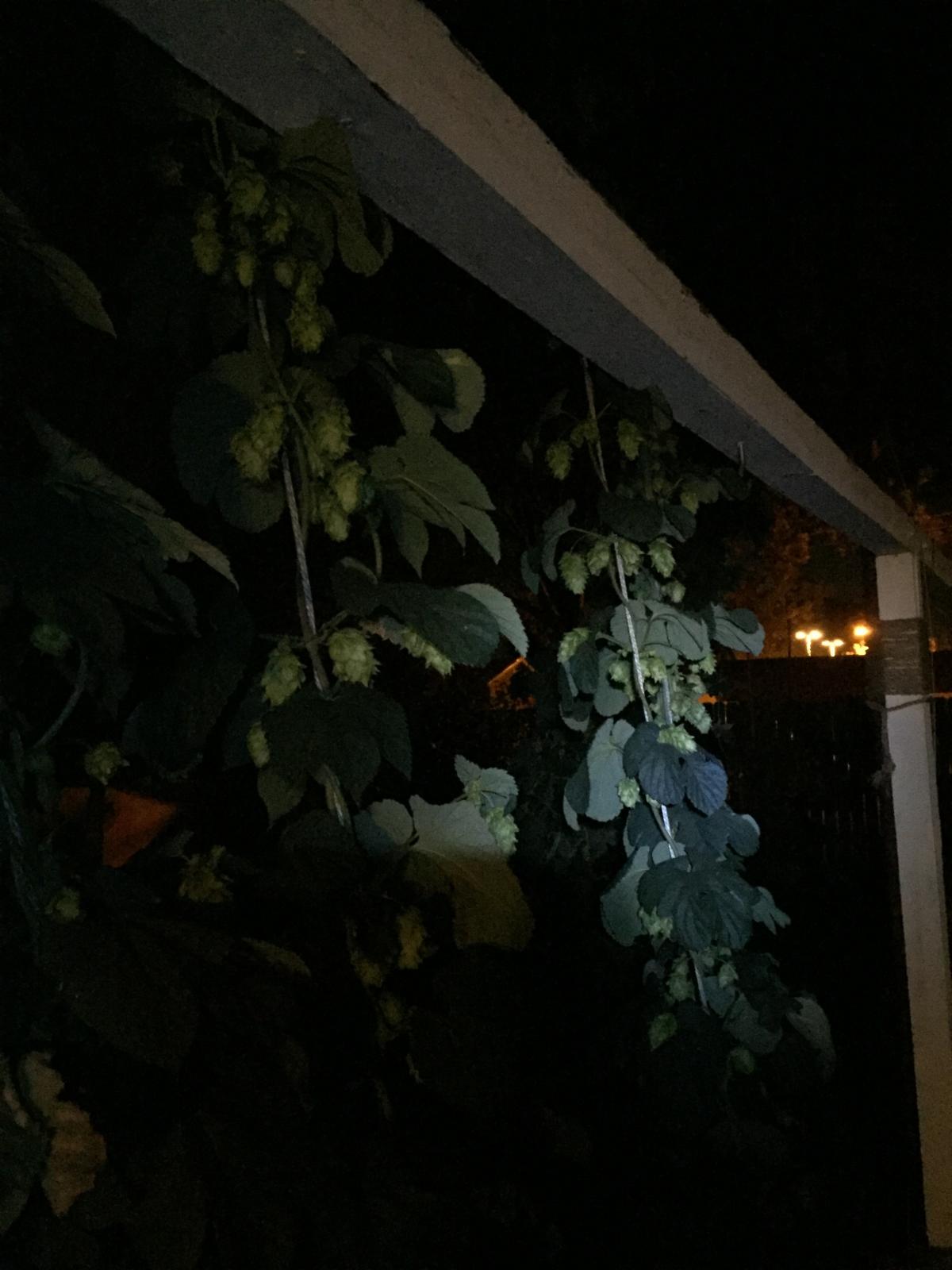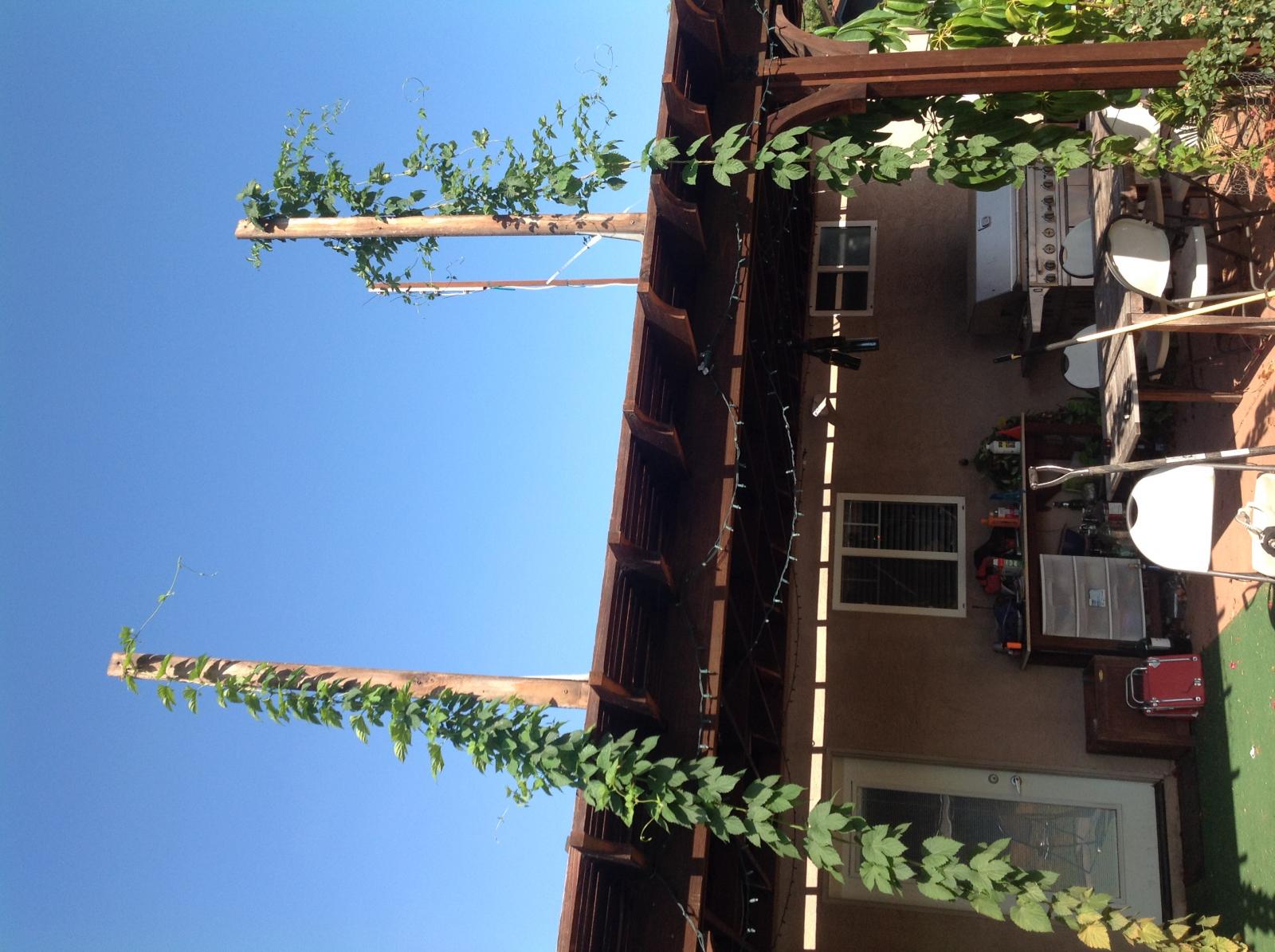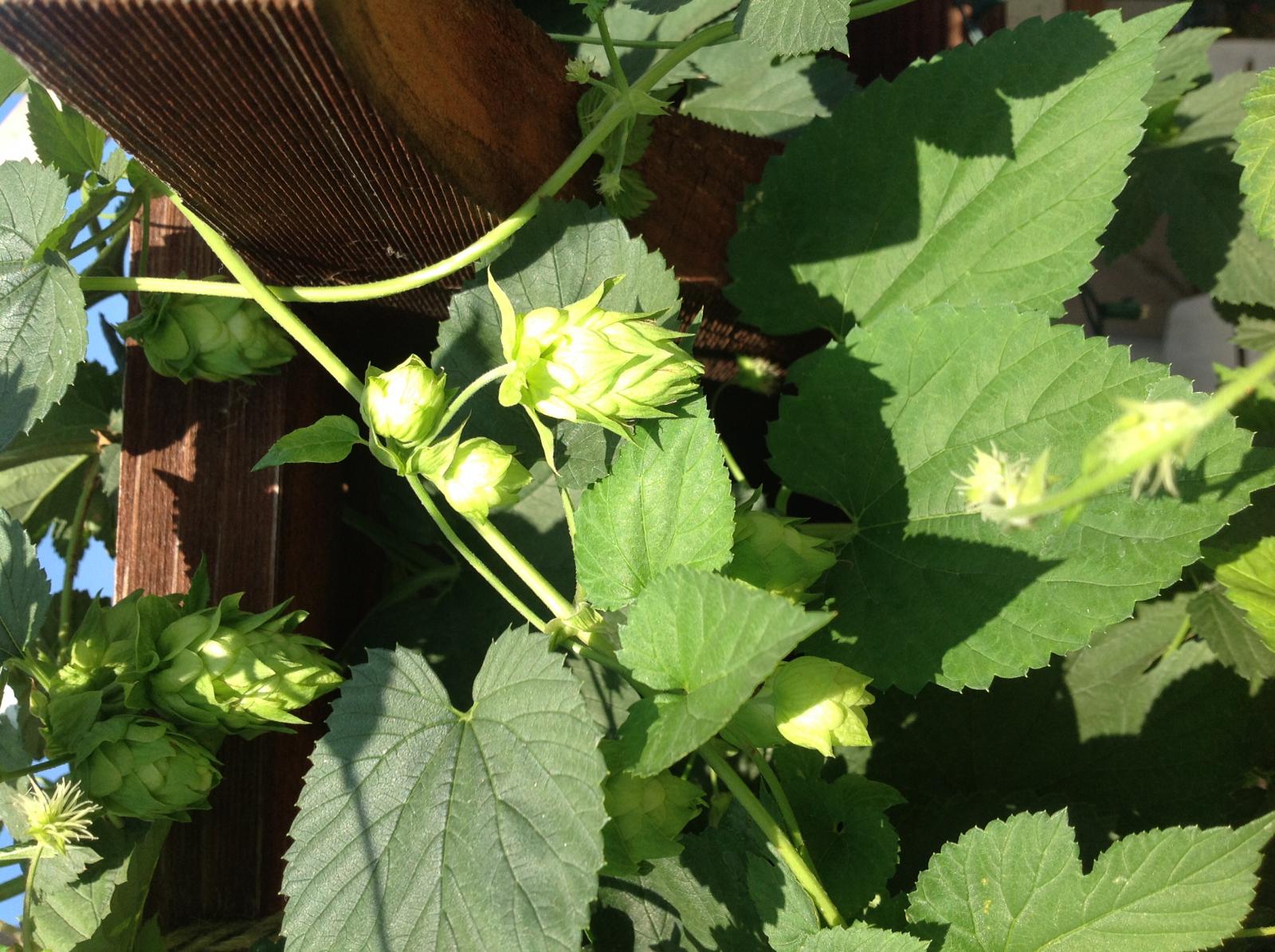Hi all, I've been lurking on this forum for a long time. Figured it was time to start contributing.
This will be my second year growing hops in containers. Last year I grew Cascade, Columbus and Newport hops in 10 gallon containers on my deck. Like you'd expect, I'm now full bore addicted to hop growing. This year I will be adding Horizon, Multihead, Santiam, Southern Brewer, Southern Cross, Willow Creek and Zenith. I am interested in seeing how the New Mexican varieties do in southern California at a lower elevation (500ft).
All of my hops were purchased at Great Lakes Hops. The mailer they add to every order mentioning this forum is how I found out about all the great hop growing info here.
After seeing just how root bound a hop plant gets in a 10 gallon after one season, I decided that this year the hops would be grown in 24 x 24 tree planters. The planters are sealed and sub irrigated to try and keep them from going dry during the hotter months. Heres a couple shots:


The hops will be strung from the four corners of the pots to the fence. From the fence they will be run to the roof which should shade out the sunny side of the house. There are only 6 planters in the shot, I still have to build 4 more for the Multihead / Southern Brewer / Southern Cross / Willow Creek.

More pics and info as they turn into plants.
This will be my second year growing hops in containers. Last year I grew Cascade, Columbus and Newport hops in 10 gallon containers on my deck. Like you'd expect, I'm now full bore addicted to hop growing. This year I will be adding Horizon, Multihead, Santiam, Southern Brewer, Southern Cross, Willow Creek and Zenith. I am interested in seeing how the New Mexican varieties do in southern California at a lower elevation (500ft).
All of my hops were purchased at Great Lakes Hops. The mailer they add to every order mentioning this forum is how I found out about all the great hop growing info here.
After seeing just how root bound a hop plant gets in a 10 gallon after one season, I decided that this year the hops would be grown in 24 x 24 tree planters. The planters are sealed and sub irrigated to try and keep them from going dry during the hotter months. Heres a couple shots:


The hops will be strung from the four corners of the pots to the fence. From the fence they will be run to the roof which should shade out the sunny side of the house. There are only 6 planters in the shot, I still have to build 4 more for the Multihead / Southern Brewer / Southern Cross / Willow Creek.

More pics and info as they turn into plants.




































